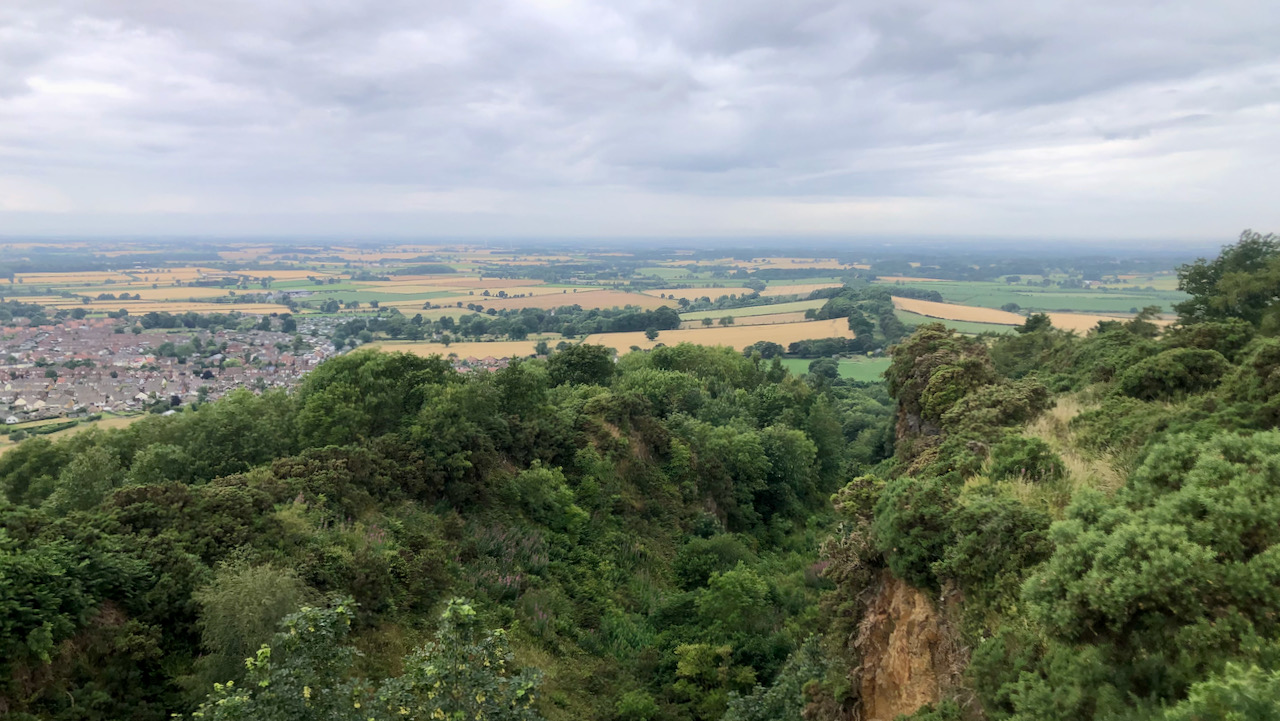A view that looking northwest from Cliff Rigg along Langbaurgh Ridge, both part of that striking intrusion of igneous rock known as the Cleveland Dyke. Formed when molten magma flowed like a fiery torrent from a volcanic fount near the distant island of Mull in Scotland, a staggering 58 million years ago. A remarkable journey that took a mere five days before it reached Cleveland.
This rock is the stuff of legend, named whinstone, and extremely tough in its hardness. It has been relentlessly quarried wherever it breaks the surface, destined to pave the roads of our towns and cities. You can find quarries at Dumfries, Armathwaite, near Carlisle, Cockfield Fell, and Bolam in County Durham. Even the grounds of Preston Park, near Yarm, and here, at Cliff Rigg, where the intrusion reached a thickness of 15 metres, and the quarrymen left a gigantic gash in the landscape.
Now, to continue southeast, across the North York Moors, where there were more quarried outcrops at Kildale, Castleton, Lealholm, Glaisdale, Egton Bridge, Sil Howe, high east of the Murk Esk valley, and finally, the Blea Hill Rigg on Fylingdales Moor. The intrusion finally lost momentum somewhere beyond Whitby, under the North Sea.

Leave a Reply